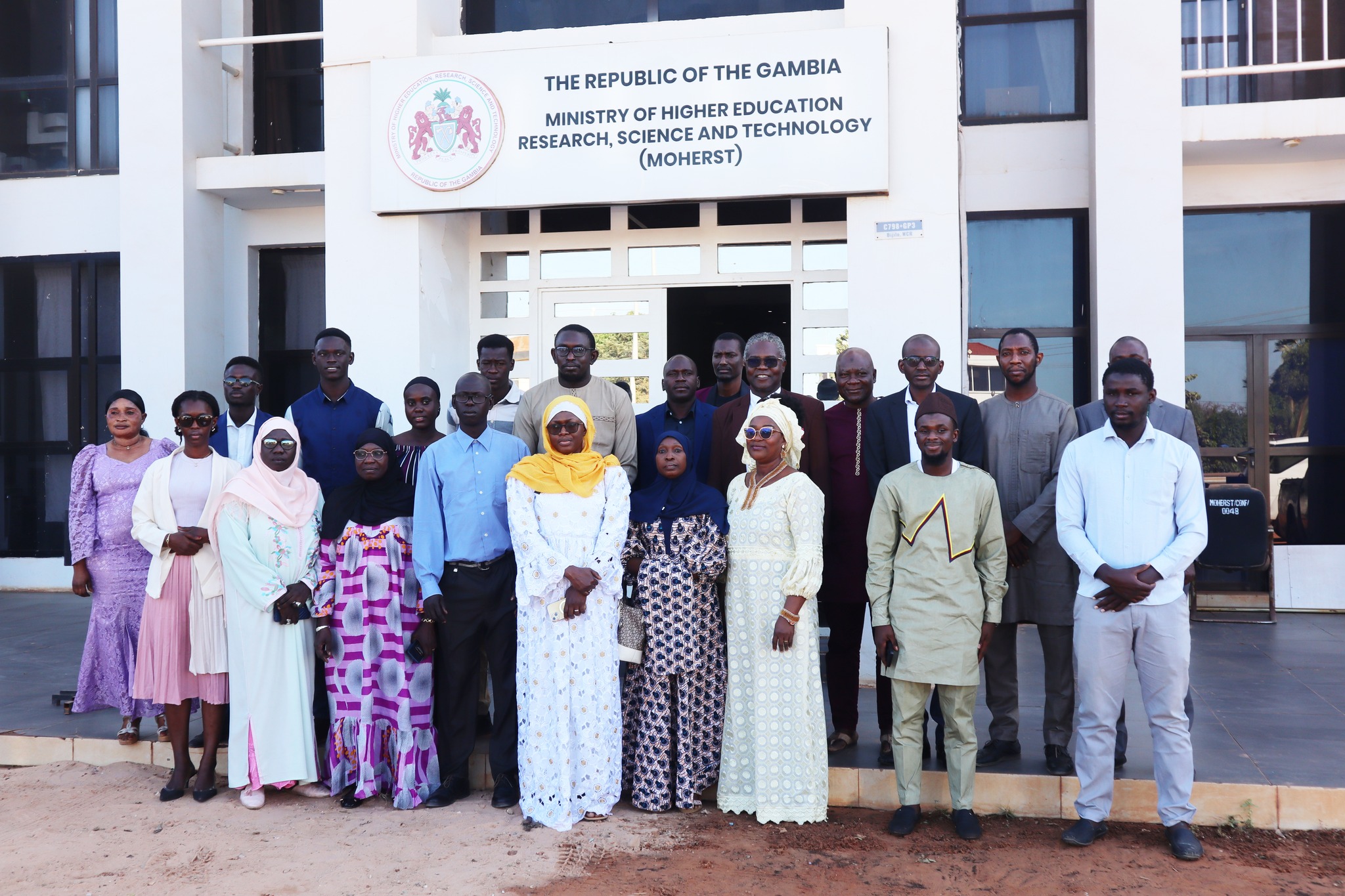Gambiaj.com – (Banjul, The Gambia) – The Ministry of Higher Education, Research, Science and Technology (MoHERST) on Tuesday, December 31, convened a one-day validation workshop to review and finalize the Draft Roadmap and Strategy for the establishment of crèche facilities at tertiary and higher education institutions in The Gambia. This significant initiative, focused on improving access, retention, and performance, particularly for student mothers, aims to address critical gaps in the education system and contribute to a more equitable and inclusive learning environment.
The workshop, which gathered key stakeholders from various educational institutions, was an essential step toward turning the vision of a supportive and inclusive education system into reality. With a particular emphasis on supporting female students who are also mothers, the initiative is designed to help foster a more nurturing environment that balances academic pursuit with family responsibilities.
In a statement delivered on behalf of the Honourable Minister of Higher Education, Research, Science and Technology, Mucktarr M. Y. Darboe, Deputy Permanent Secretary (DPS) for Technical Affairs at MoHERST, noted that the Draft Crèche Roadmap and Strategy marks a critical turning point for the country’s higher education system. He described the initiative as a “strategic necessity” for achieving not only educational equity but also broader national goals of empowerment and social inclusion.
DPS Darboe explained that the Ministry’s mission is centered on structural transformation, particularly revitalizing the Technical and Vocational Education and Training (TVET) subsector, which aligns with the government’s efforts to reduce reliance on expatriates, drive economic growth, and promote innovation and critical thinking within the workforce. However, he emphasized that achieving these goals requires a holistic approach to education that goes beyond classrooms and lecture halls.
“Establishing crèche facilities within tertiary and higher education institutions is not just a developmental goal—it is an essential strategy for advancing equity and inclusion,” Darboe said. “This initiative will ensure that the holistic development of both students and children is supported, empowering women and fostering a more inclusive environment for all.”
The validation workshop provided a collaborative platform for participants to offer feedback, insights, and recommendations on the draft strategy. The event aimed to refine the roadmap, ensuring that it aligns with the aspirations of all stakeholders and creates a practical, actionable framework for implementation.
Dr. Kenneth O. Igharo, the consultant for the project, highlighted the current gap in child care facilities within the country’s higher education institutions. He explained that while daycare centers exist, there are no dedicated crèche facilities to care for infants and toddlers, particularly those between zero and three years old. This gap has created a significant barrier for student mothers, who are often forced to choose between their academic careers and childcare responsibilities.
“The absence of formal crèche facilities is a challenge that needs to be addressed,” Dr. Igharo stated. “This project, driven by MoHERST, will lay the groundwork for evidence-based policy development that will guide the government in establishing the necessary infrastructure for early childhood care at tertiary institutions.”
Participants at the workshop, including experts from the Child Protection Alliance (CPA), expressed strong support for the initiative. Lamin Fatty, National Coordinator for CPA, welcomed the strategy, noting its potential to empower women and contribute to child development. He emphasized that the crèche facilities would not only support student mothers but also foster a broader system of development for both the child and the mother.
“We at the CPA see this as a fundamental development,” Fatty said. “The establishment of these facilities is a step in the right direction, and it is essential that we ensure a robust system is put in place to maximize the impact on women’s empowerment and child development.”
Fatou Janneh, the Project Focal Person at MoHERST, chaired the workshop and underscored the significance of the project. She explained that the crèche strategy aims to bridge gaps in the current educational system and ensure that mothers have the support they need to succeed academically without compromising their children’s well-being.
As the validation process moves forward, stakeholders are optimistic that the initiative will help create a more inclusive, accessible, and supportive higher education system that benefits students, especially women and mothers, and contributes to the country’s broader development goals.
The next steps will involve refining the Draft Crèche Roadmap and Strategy, ensuring that it reflects the shared vision of all partners, and establishing a clear implementation plan to roll out the initiative across tertiary and higher education institutions in The Gambia.










